Astronomy has seen so much progress and change in the last decade. From SpaceX and reusable rockets to landing on comets and discovering oceans on moons. The last ten years gave us great science. However, the start of 2010 didn’t look so promising. It started off in February of 2010 with Obama cancelling the Constellation program or the mission to get back to the Moon by 2020, due to budget constraints. Nonetheless, it was a tough start and a year later the space shuttle retired signifying that NASA needed a new spacecraft to take them to the Moon, Mars and beyond. No one could really guess what these 10 amazing years would deliver to not only astronomers but the public. Let’s jump in:
NASA’S CURIOSITY ROVER LANDS FAMOUSLY ON MARS
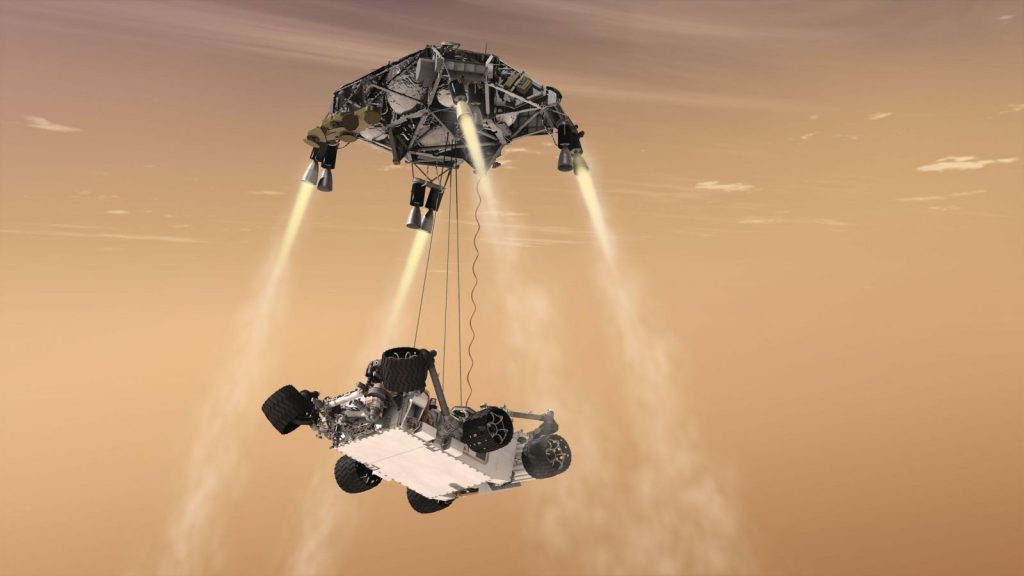
August 2012 the world has their attention at what may be the most widely viewed Mars landing. A few things were happening here. One, the older brother Spirit rover was decommissioned getting the world empathetic for these lonely robots on the Martian planet.
Second, the way the Curiosity rover needed to land was one of the most complex and ambitious tasks. NASA has landed rovers before Curiosity but because Curiosity was much larger in size it meant they had to go about it a different way. The deemed the process so complex and so daunting that they dubbed it “7 minutes of terror.”
A series of actions that essentially all have to go perfectly for the first time initiate. Curiosity enters Mars coming in at roughly 21,000 kilometres per hour (13,000 miles per hour) and needs to engage a parachute that will help slow it down and then disengage. Afterwards, an onboard computer will guide it to the landing zone after numerous calculations on the fly. The next stage engages and thrusters slow down the spacecraft to almost 2-3 kilometres per hour (1.8 miles per hour). It releases Curiosity softly on the landing zone and then flies away.
Everyone is jumping for joy and the world rejoices. Curiosity takes some amazing selfies and does some amazing science in the years to come. It also sets up the same procedure for the Mars 2020 rover as now they can send bigger rovers with more instruments.

VOYAGER 1 BECOMES HUMANITY’S FIRST SPACECRAFT TO ENTER INTERSTELLAR SPACE
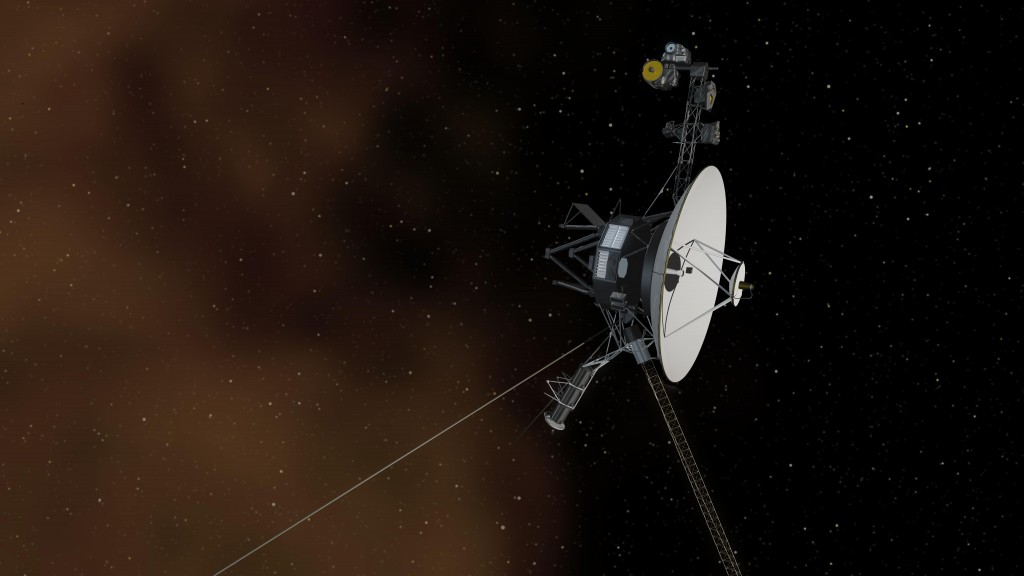
Voyager 1 is one of the most inspiring and exciting missions NASA launched. On August 25th, 2012 Voyager 1 entered interstellar space. Its goal is to venture out of our solar system and roam interstellar space and hoping to be picked up by intelligent life. It has a famous gold record which will last millions if not billions of years. On this record, it has greetings in different languages, animal sounds, music, and various other sounds to portray what planet Earth is like. There is another disc with instructions on how to play the record.
The one thing scientists did not do is give any real coordinates of where Earth is just in case the aliens are not friendly. Nevertheless, Voyager 1 travelled through different sections of our solar system that were never visited before.

As you can see above, Voyager 1 is the top one and has entered interstellar space. Whereas, Voyager 2 is still in the heliosphere. It will still be another 40,000 years until Voyager 1 reaches the next star. Until then we can dream and wonder what Voyager 1 sees on its lonely but exciting journey.
EUROPEAN SPACE AGENCY’S ROSETTA SPACECRAFT LANDS ON COMET 67P

Here’s a mission that really showed humans what we’re capable of. The European Space Agency launched a mission called Rosetta that would catch up with comet 67P/Churyumov–Gerasimenko and then deploy the lander Philae. It was something out of a sci-fi movie but absolutely real.
This mission taught us how odd comets look. Some people compared comet 67p to a peanut or a rubber ducky. Rosetta’s mission also taught us that we are able to plan and work hard to intercept an object which is huge for future missions. Whether we want to investigate other objects more closely that are moving fast or that we need to move an asteroid on a different course to avoid collision with Earth.
However, one of my favorite images or movies that came from this mission is that it snowed!
I can’t wait to see more of these missions in the future. We already have some in-progress from Japan and the U.S.
HUMANITY FINALLY SEES PLUTO UP-CLOSE AND PERSONAL AND IS GREETED WITH A HEART
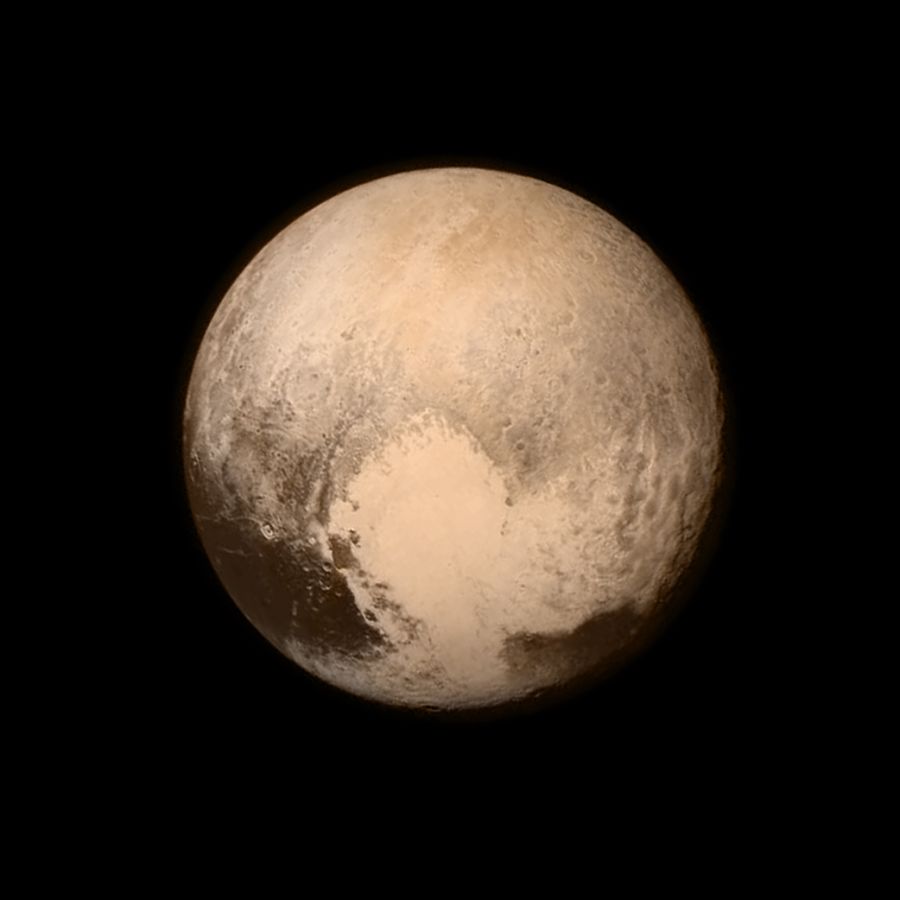
Credit: NASA/New Horizons
Before 2015 we had no great photos of what Pluto actually looked like. We have amazing photos of Jupiter. Extraordinary photos of Saturn taken by the Cassini Spacecraft and even beautiful images of Mercury taken by Messenger. Hubble Telescope could get blurry photos of Pluto but nothing that could really compare to the resolution of the other planets.
Enter the New Horizons mission. This mission would take a 9-year journey blasted off into space to go as fast as humanly possible. The destination that is 40 times further away from the Sun than Earth is. In fact, the mission was built as a flyby, meaning we’ll zip by Pluto and take numerous photos and measurements. And boy, did we get so many amazing learnings!
Pluto taught us:
- Its color was never expected to look so exotic and complex – just compare what people thought Pluto looked like before 2015 vs. what we know and you’ll see
- The 1,000 km wide “heart” on Pluto which is nitrogen glacier broke the record and is the largest glacier in the solar system
- Pluto has 5 satellite “moons” that range from odd shapes like wide and short pancakes
- Pluto’s atmosphere is made up of nitrogen and extends a whopping 1,600 km out into space vs. Earth’s 480 km
- The seasons on Pluto is even stranger since Pluto is on a horizontal tilt that results in seasons lasting for decades
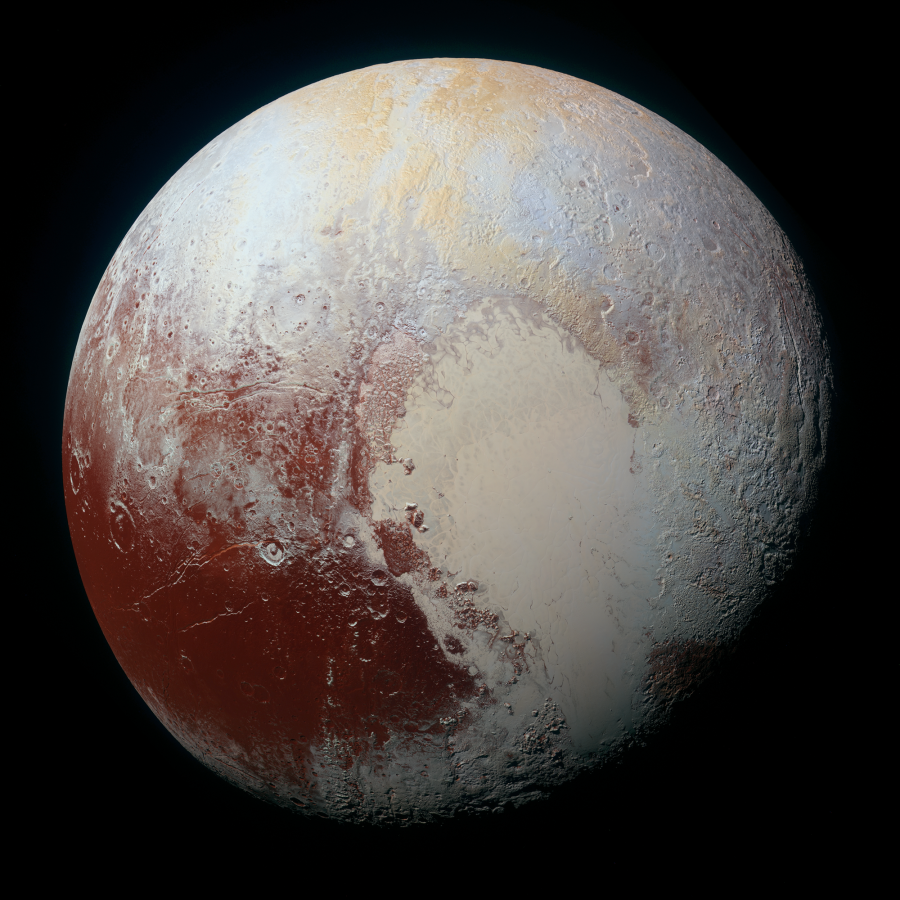
Credit: NASA/New Horizons
The above image is beautiful and to be honest you have to see it in full detail here. You can start to appreciate how gorgeous Pluto is.
New Horizons is still giving us amazing data not only on Pluto but on Kuiper belt objects such as MU69 or Arrokoth. Scientists and even the public will have a new appreciation for Pluto as well as give us a much deeper understanding of these icy dwarf planets that reign over the Kuiper Belt Objects.
CASSINI MISSION UNCOVERS AN INTERNAL OCEAN UNDER SATURN’S ENCELADUS ICY CRUST
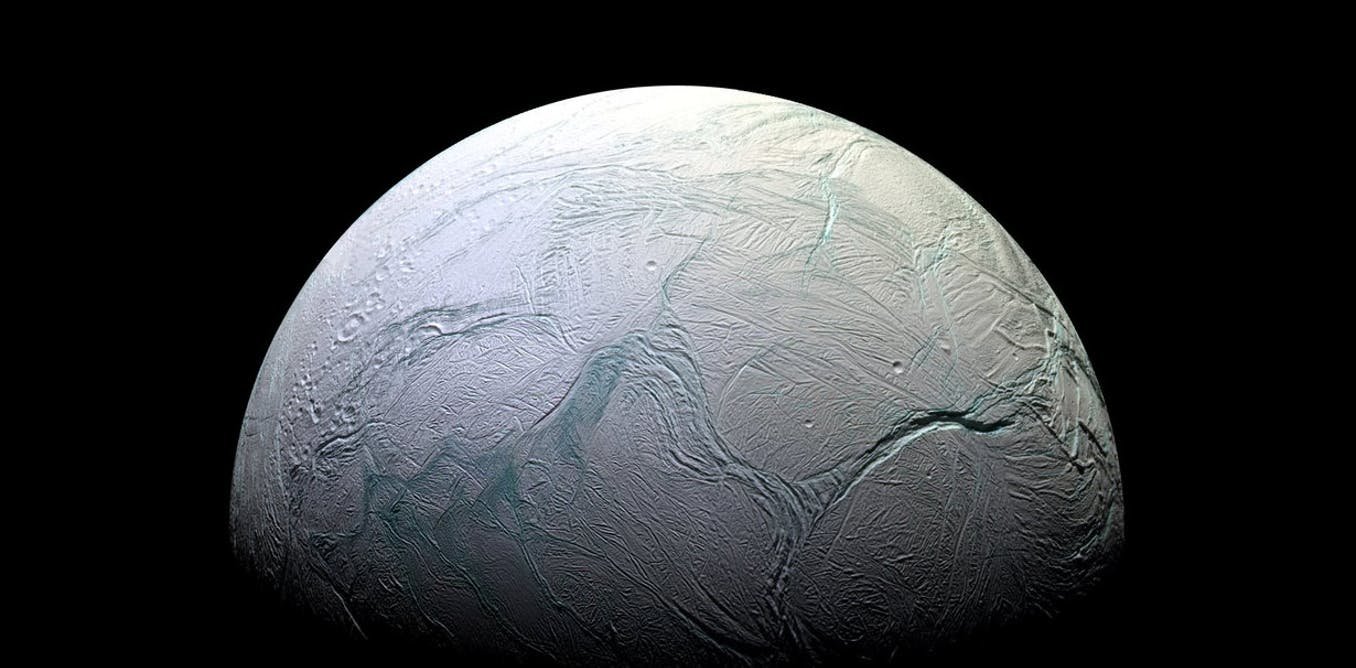
Cassini spacecraft could have its own top 10 for the decade. It has produced so many awe-inspiring photos of not only Saturn but its moons. Saturn is already a gorgeous planet with so many peculiar features such as a hexagonal storm at the poles. However, its moons are equally exciting and rewriting where we thought life exists in solar systems.
Enceladus is the sixth-largest Saturnian moon. What really shook this decade is the discovery of plumes or geysers that spout out of the cracks of Enceladus. Why is that important? Well, we believe based on Earth’s life that wherever there is water and an energy source that there may be life! One of the main questions in planetary science is if we’re alone or if there is life on other planets or now even moons!
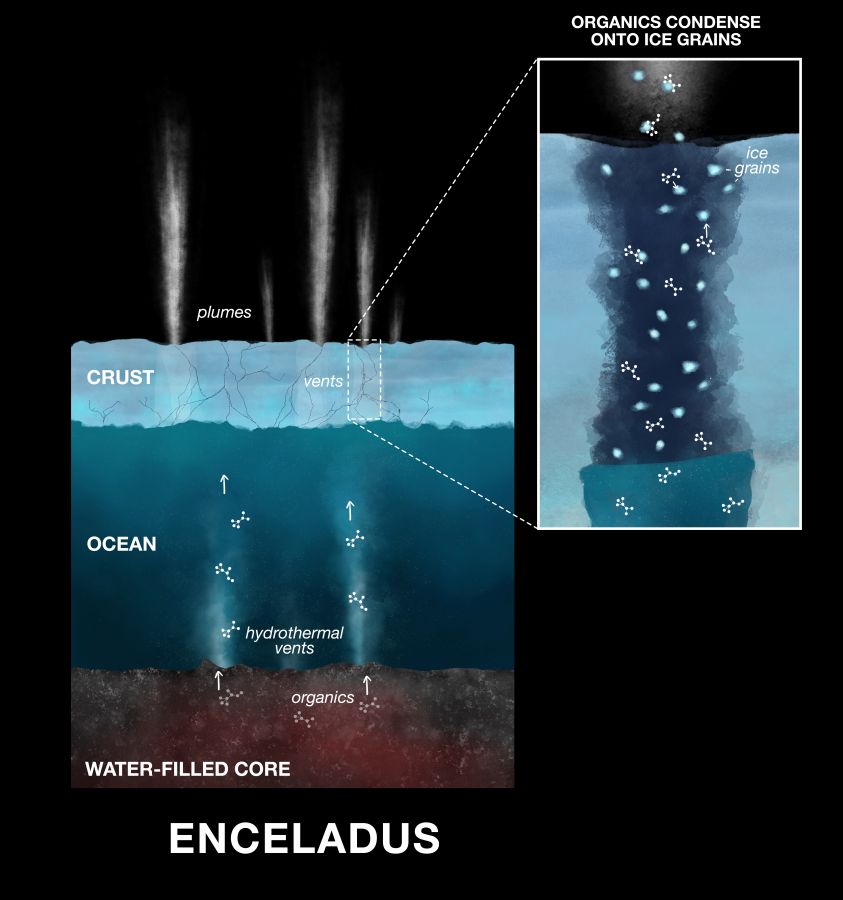
Credit: NASA
The above photo is an illustration showing how within Enceladus there are hydrothermal vents that are shooting out the water within Enceladus and being released into space. The interesting part is scientists discovered the ingredients for amino acids are all there in the plumes. They’re not sure if amino acids are mandatory for life to exist but they do see that as strong evidence for putting together this jigsaw puzzle of whether life exist on Enceladus.
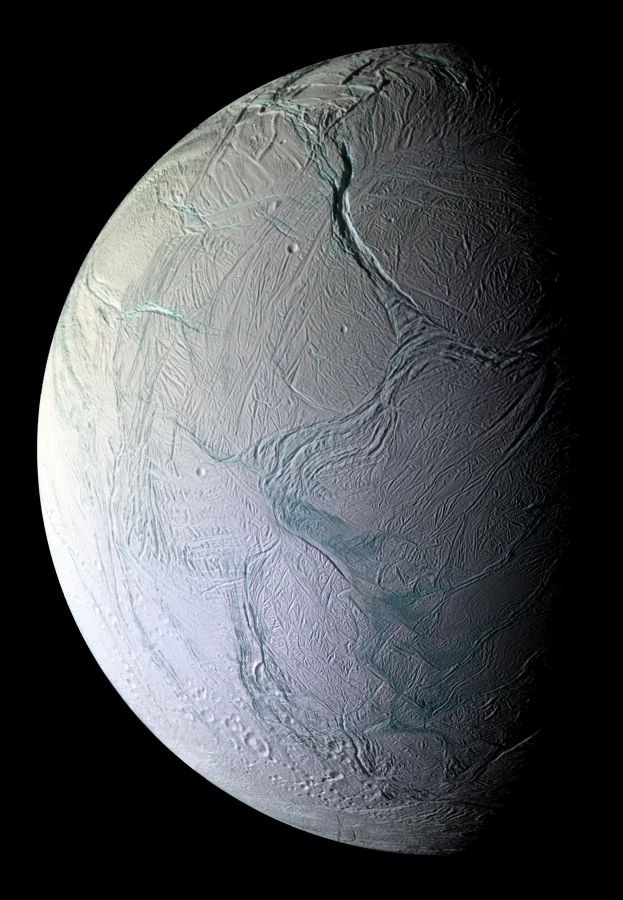
Credit: NASA/Cassini
Discovering that there is an ocean within Enceladus and that it has a higher chance of organic compounds or life is an extraordinary find. It means we when we look for life beyond our solar system that planets aren’t the only places to look. It also means that there could be life outside of Earth a lot closer than we imagined. It really opens up an entire world for planetary science and astrobiology.
EINSTEIN SHOWS HE IS STILL AHEAD OF HIS TIME: FIRST DISCOVERY OF GRAVITATIONAL WAVES
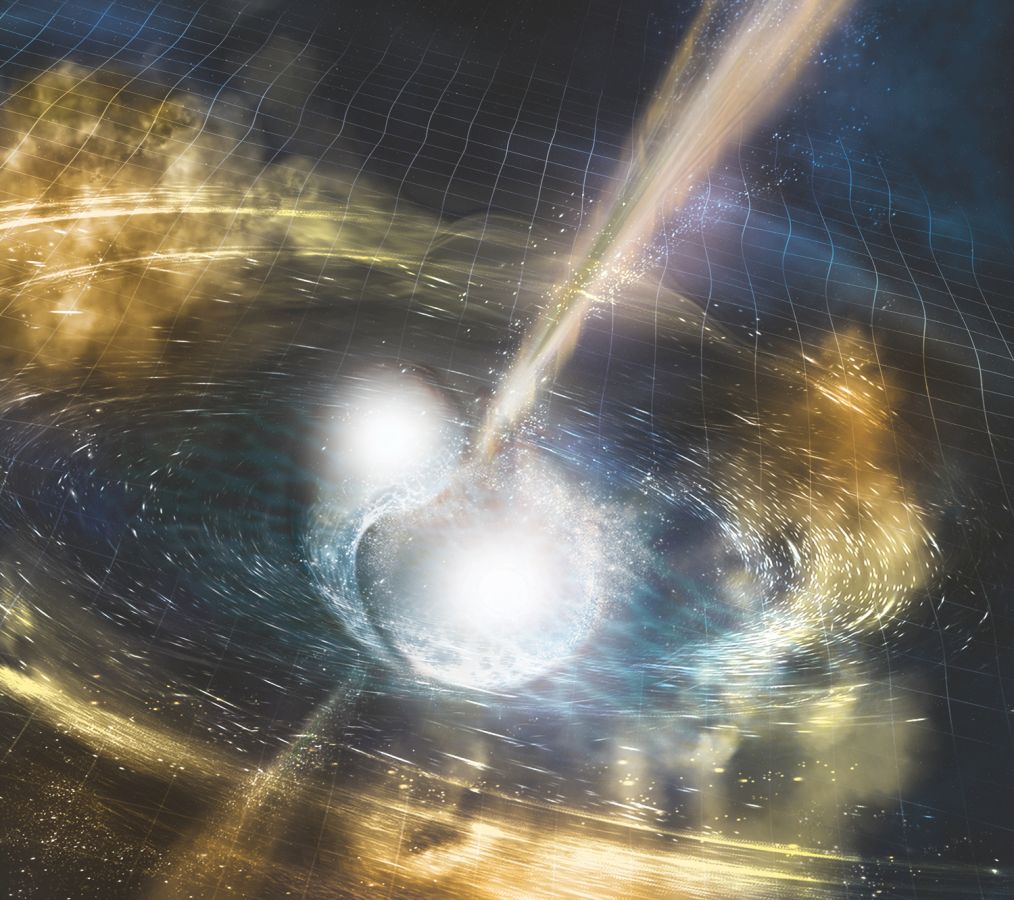
Credit: LIGO
One of the most exciting discoveries of the last 10 years is gravitational waves. Gravitational waves are ripples in space-time that are caused by some of the most chaotic energetic processes in the cosmos. That may sound like something out of science fiction but that is now science fact thanks to the LIGO team.
One of my favorite parts of this discovery is the man who predicted it. Albert Einstein. Famous for his e=MC2 which teaches us beautifully the equivalence between mass and energy. Of course, he also discovered numerous other things and goes down in history as one of the most prolific scientists of humanity. Well, if you weren’t convinced before you may be now! Einstein predicted gravitational waves in 1916! This is just within his own mind and using a pen and paper. He theorized that when two objects with enough mass and energy come closer together that they would expel gravitaional waves that ripple space-time!Of course, there was no way to prove this as the technology was nowhere near capable.
However, in 1974 or 20 years after Einstein’s death, astronomers in Puerto Rico discovered a binary pulsar that was perfect to test Einstein’s theory. They observed for 8 long years and noticed, just as Einstein predicted, that these two stars were getting closer together at the precise rate predicted by general relativity when gravitational waves are being emitted. Of course, this wasn’t necessarily direct evidence or physical evidence but it did support Einstein’s theory.
Flash forward to 2015. We now have the advancement of technology to actually measure these gravitational waves. Not only that, but we’re measuring two supermassive black holes colliding 1.3 billion light-years away!
This will go down as not only as one of the biggest confirmations and discoveries of the last decade but of humanity! It goes to show a peek at how brilliant Einstein was and the amount of support and hard work from the scientists who came after to prove that gravitational waves are real.
KEPLER TELESCOPE DISCOVERS OVER 2,739 EXOPLANETS MAKING IT THE LARGEST EXOPLANET DISCOVERY EVER

Exoplanets are planets outside of our solar system. These are hugely important to planetary science because for us to answer “are we alone in the universe?” We need to study more planets beyond our own solar system to see if there is intelligent life out there. Astronomers look at things like how habitable the planet is. Whether it has liquid water or how close it is to its parent star.
The Kepler telescope was at the forefront of discovering all of the exoplanets it could see for us. This data is extremely valuable and will be studied for decades to come. However, Kepler had its own technical challenges that caused a failure in 2013. Nevertheless, through the tenacity of the team, they found a new way to keep retrieving more data and dubbed the reincarnation “K2.” This extended mission lasted until 2018 and concluded the mission.
Don’t worry though another mission has already picked up where it left off called Transiting Exoplanet Survey Satellite (TESS). One day we’ll have enough data and evidence to supply future space exploration missions to check out a superset of these exoplanets in greater detail. Year by year we’re getting closer to understanding exoplanets and our place in space. 2020s will be exciting to see how many more exoplanets we can discover.
PRIVATE SPACE RACE AND HOW REUSABLE ROCKETS ARE LEADING THE WAY
At the beginning of this decade, the space shuttle was on the way out and didn’t look good for the U.S space program to find their own way of getting to space. Russia stepped in and helped out by providing their rockets at a cost to go to space. This recipe was ripe for private space companies to enter and help solve a problem.
SpaceX, Blue Origin, Virgin Galactic and others started to step into the private space race. It was a race to solve for who could get to space in a reliable way that was also cost-effective. Elon Musk once said that if you could imagine airplanes today being thrown out after every use no one would be able to afford to travel. Likewise, if someone was able to figure out how to make space rockets reusable so that the cost became 1/100th of what they typically are, then that opens everything up.
Not just for NASA to send their astronauts to the ISS but also space tourism. This meant the everyday person could potentially see in their lifetime an affordable way to get to space and experience the overview effect.
One of the major accomplishments came from SpaceX and Blue Origin when they were both able to launch a rocket into space but also autonomously be able to come back down and land. It not only came back and landed but landed exactly where it took off as well as landed on a platform in the ocean where it’s not completely static. This was huge and still amazing to watch. Once again, this is something out of a science fiction movie but has turned to real life.
Private space companies have their eyes set on helping NASA with resupply missions to the ISS and even going to the Moon and Mars! This is one area you will surely hear a lot more in the 2020s.
FOR THE FIRST TIME ASTRONOMERS OBSERVER AN ALIEN OBJECT PASS THROUGH OUR SOLAR SYSTEM
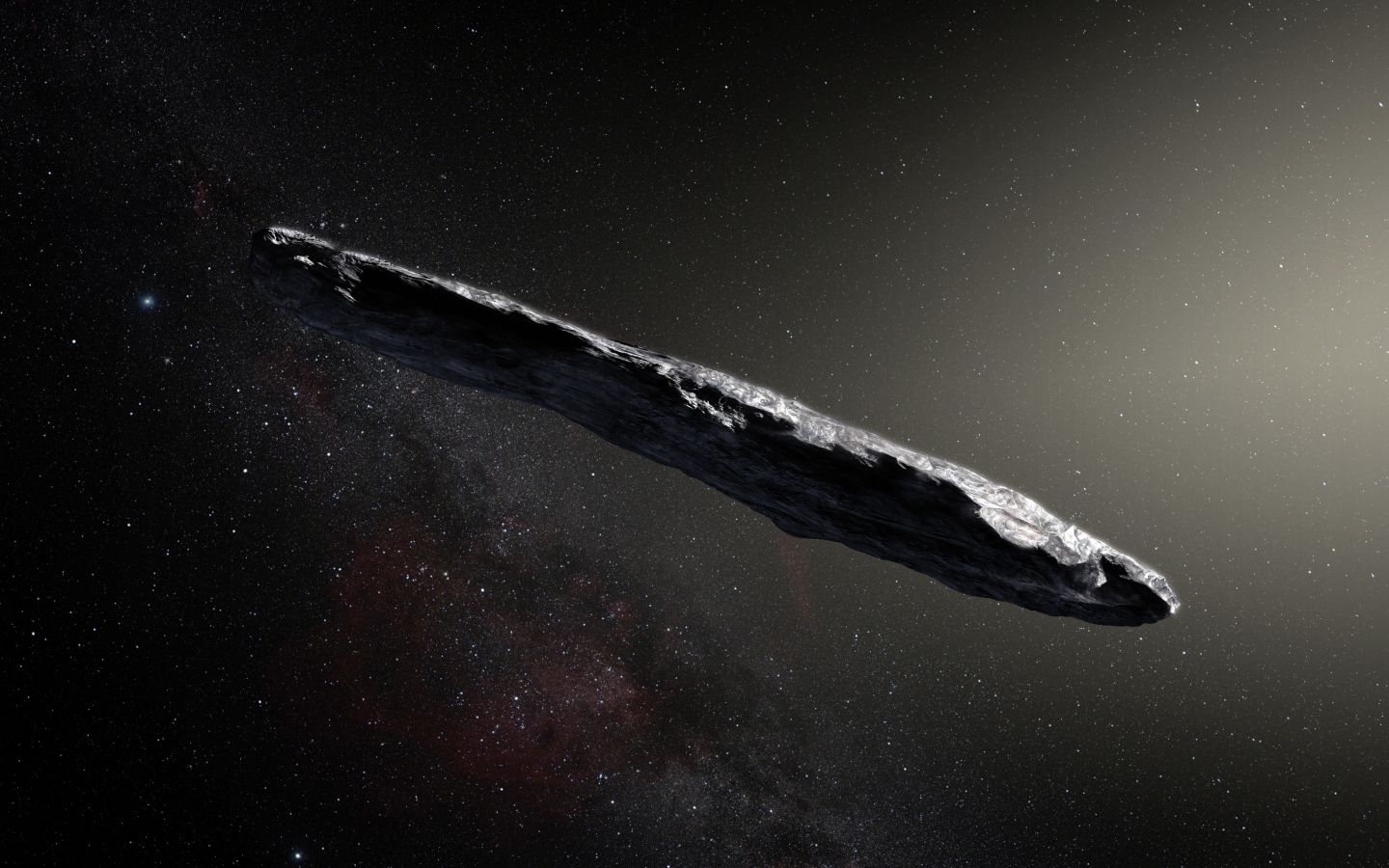
Credit: ESO/M. Kornmesser
This is probably one of the strangest but exciting stories of the last decade. Get this. An odd-shaped rocky object flies directly into our solar system from above and leaves just as mysteriously as it arrives. Why is that strange? Well for one we don’t get visitors from outside the solar system. In fact, it’s extremely rare unless we see comets. But comets are fairly well documented and they’re still within our neighbourhood.
The interstellar traveller dubbed ‘Oumuamua flew in just like this:

Credit: NASA
It still is absolutely stunning to know that this happened and we saw it all unfold. We even tried to take some photos of it but it’s nothing more than a bright dot with streaks of light because of how fast we had to track it.
What’s also amusing is this caught us off guard so much that the International Astronomical Union didn’t even have a name for objects like this! It’s something astronomers know does happen but the fact the orbit was so extreme was fascinating. Our interstellar traveller sped through at a whopping 25.5 kilometers per second or 15.8 miles per second!
This exciting observation is something that has never happened before and the fact it happened in the last decade is a huge discovery. Now observers will keep a closer eye at any other future interstellar visitors.
FIRST IMAGE OF BLACK HOLE TAKEN
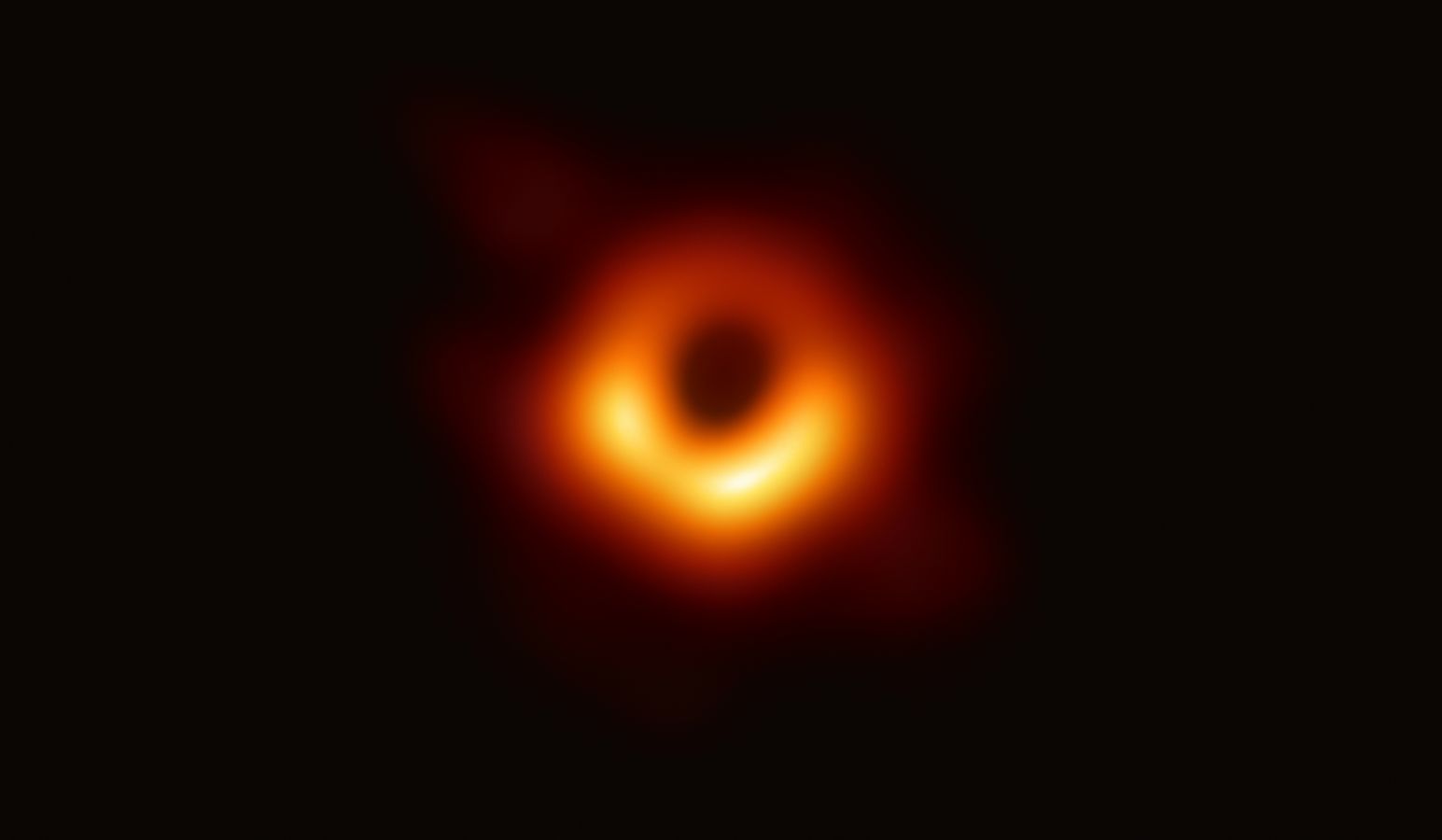
Credit: Event Horizon Telescope
Here’s another one that you may at first feel underwhelmed. The photo above is an actual photo of a real black hole. Now, you may look at it and shrug but let me tell you why this is amazing and what you’re actually looking at.
First, we know that black holes are so strong gravitationally that even light cannot escape it. So how do you take a photo where there is no light even? Well, that’s what is so exciting about this photo. The blurry hole you see in the middle isn’t the black hole but it’s the shadow of the black hole! Basically, the black hole is feeding on cosmic gas and material that is flowing directly into it. It also creates an accretion disk around it or matter that circles it like water funnelling into your drain.
The force is so strong within a black hole sucking up all the material that it actually glows! The shadow is a result of that glow around the black hole that it even produces a circle-shaped shadow! This is something that people weren’t sure if we could even get a resolution strong enough to capture a black hole. Most of the time we just look at galaxies and notice at the center all the matter circling into it but never actually close enough to see the black hole itself.
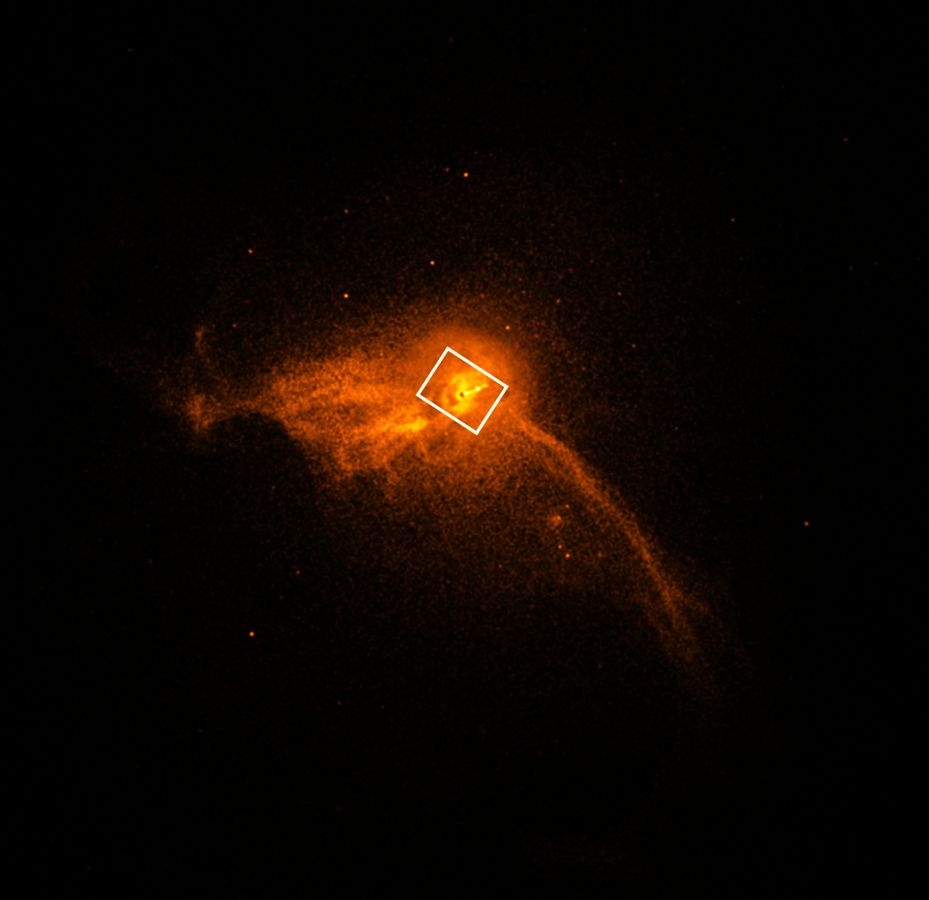
The photo above is what it looks like from further away. You can clearly see the “tiny” yet fierce black hole demanding complete control on the material around it. You can even see the streak of matter being pulled in from afar.
It honestly is the coolest photo we have possibly taken in the last decade or even ever! It might also be one of the most important ones because it confirms so much of what we know about black holes as well as gives us insight of how to take more photos of these black holes. There are many types out there and we can’t wait to see what else is in store for 2020.
